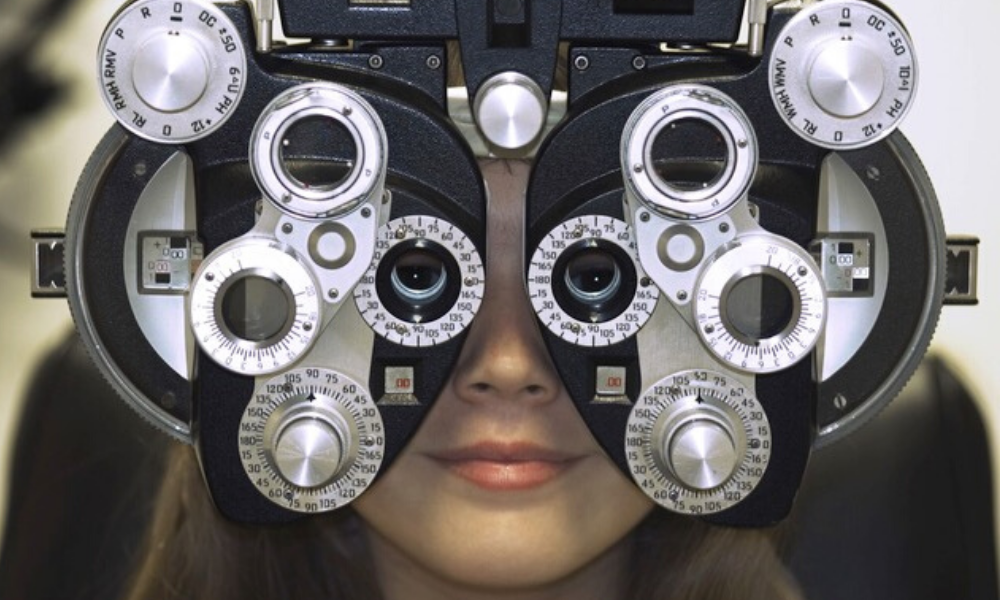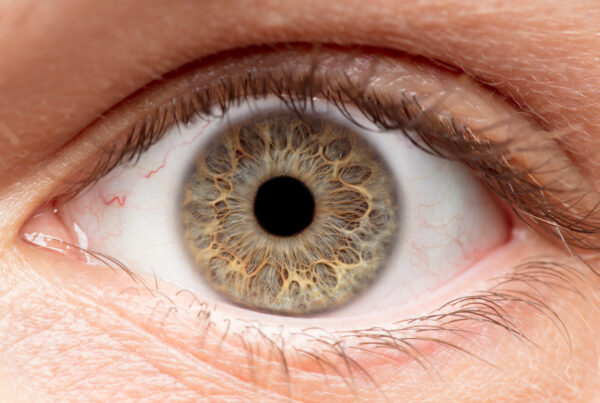
You can tell all THAT just from my eye exam?!
Many patients are surprised to find out that their eye examination is much more than an evaluation of their eyes. In fact, many different general health conditions can be first diagnosed by your eyecare specialist. These can range from mild conditions to life threatening diseases. In the next couple blogs, we will be discussing some of these disorders as well as how they are diagnosed and treated.
To understand how your doctor can find and diagnose these diseases in the rest of your body just by looking at your eyes you must understand a few things. First, when your pupil is dilated (enlarged) with eye drops at the time of your eye exam this opens the “window” to let your doctor look through the clear portions in the front part of your eye to see the important structures for vision located in the back of the eye. Among these are tiny blood vessels that carry the oxygen and nutrients that your eye needs to function normally. Because the small vessels throughout the rest of the body are hidden under your skin and within your organs, they are not visible. Thus, the eye is the only place that these vessels can be directly seen. Since the same blood that goes through the rest of the body also travels through these eye vessels the blood carries with it information from the rest of the body. So, if we see signs of damage to the blood vessels in the eye from things like high blood pressure or diabetes, we can assume that the same thing is happening in the rest of the body. More about that in next month’s blog.
The second thing that helps us diagnose problems with the rest of the body is another unique structure in the back of the eye, called the Optic Nerve. While the eye is what “sees” everything, the brain is what processes and makes sense of what we are “seeing”. The optic nerve is the extension of the brain that connects the two together. Since we can see the end of the optic nerve when we look into the eye, and the optic nerve is the extension of the brain, we can get clues to the overall health of the brain and thus diagnose many different brain disorders through the eye exam. Let’s take a closer look at some of those conditions.
Stroke
Strokes are a leading cause of disability and death worldwide. They are caused by either a decrease in blood flow (ischemic stroke) or bleeding (hemorrhagic stroke) within the brain. As Ophthalmologists, we obviously think the eyes and vision are important. Our brains do too. About 20% of the brain is devoted entirely to vision. Another 40% of the brain is dedicated to the integration of vision with other things such as coordination, touch, etc. Because such a large portion of the brain is involved in some way with vision, damage to the brain from a stroke often affects our ability to see. In fact, a decrease in vision may be the only observed symptom of stroke. As a result, a well-trained eye care specialist may be able to diagnose a new stroke and refer you for further evaluation and treatment. If a stroke is suspected, your eye doctor will want to get a visual field test. This is a test to map out the edges of your sight, known as your peripheral vision. In the same way that strokes on one side of the brain cause weakness on the opposite side of your body the same is true for vision. A stroke on the left side of the brain will cause a loss of the right part of the vision for both eyes and vice versa. The trained eye care specialists at SureVision Eye Centers will be able to look at the pattern of your peripheral vision problems and suggest to the radiologist the likely location of the stroke so they know where to look when you have your imaging. If a stroke is suspected the next steps usually are a CT and MRI of the brain to confirm the diagnosis.
Pituitary Tumor
The Pituitary Gland is a very important structure that sits behind the eyes and just below the brain. This gland secretes many important hormones that help regulate growth, stress, menstrual cycles, pregnancy, metabolism, and more. It is also prone to developing both benign and, less commonly, cancerous tumors. Because of its location near the nerves that carry vision from the eyes to the brain if the tumor grows too large it causes vision damage. In fact, it creates a specific pattern of vision loss in which patients lose the outside half of their vision in both eyes. Because of this, Ophthalmologists and Optometrists are often the ones who diagnose these tumors, despite the fact that the don’t even occur in the eyes! Treatment for Pituitary tumors usually involves either medication or surgical removal. Patients may regain a portion or sometimes all of the vision after the tumor is removed.
Brain Tumor
Sometimes during an eye exam, we may, unfortunately, find signs worrisome for a brain tumor. If large enough, both benign and cancerous brain tumors can cause loss of peripheral vision, loss of central vision, and swelling in the back of the eye around the optic nerve. Like we discussed above, the optic nerve is an extension of the brain. When brain tumors grow, they increase the pressure in the fluid that surrounds the brain, which leads to swelling. When this swelling extends to the optic nerve it is called papilledema, which can be directly seen during your dilated eye exam.
These serious brain conditions can all be first diagnosed by a qualified and trained eyecare professional. If you have a strong family or personal history of any of the above conditions and would like to schedule a detailed evaluation with one of the doctors at SureVision Eye Centers, please contact us or call 314-921-2020. Stay tuned for next month’s blog to see what other surprising conditions can be found just from your eye exam!



